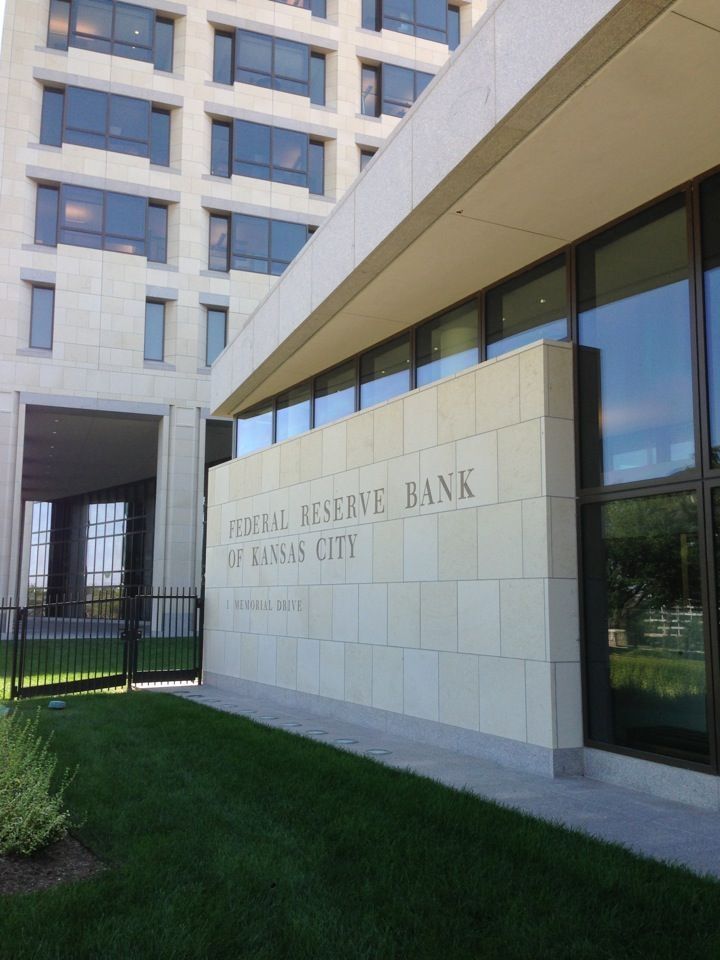Fed Beige Book: CRE Mixed Across Districts

Overall Economic Activity
Economic activity generally continued to expand modestly in the final six weeks of 2019. The Dallas and Richmond Districts noted above-average growth, while Philadelphia, St. Louis, and Kansas City reported sub-par growth. Consumer spending grew at a modest to moderate pace, with a number of Districts noting some pickup from the prior reporting period. On balance, holiday sales were said to be solid, with several Districts noting the growing importance of online shopping. Vehicle sales generally expanded moderately, though a handful of Districts reported flat sales. Tourism was mixed, with growth reported in the eastern seaboard Districts but activity little changed in the Midwest and West. Manufacturing activity was essentially flat in most Districts, as in the previous report. Business in nonfinancial services was mixed but, on balance, growing modestly. Transportation activity was also mixed across Districts, with a majority reporting flat to weaker activity. Banks mostly characterized loan volume as steady to expanding moderately. Home sales trends varied widely across Districts but were flat overall, while residential rental markets strengthened. Some Districts pointed to low inventories as restraining home sales. New residential construction expanded modestly. Commercial real estate activity varied substantially across Districts. Agricultural conditions were little changed, as was activity in the energy sector. In many Districts, tariffs and trade uncertainty continued to weigh on some businesses. Expectations for the near-term outlook remained modestly favorable across the nation.

Federal Reserve Bank of Kansas City
Summary of Economic Activity
Tenth District economic activity edged up in late November and December, although conditions remained mixed across sectors. Consumer spending rose modestly, driven by robust retail sales during the holiday shopping season. Contacts in the wholesale trade and professional and high-tech services sectors also reported modestly higher sales, while sales in the transportation sector decreased. Manufacturers continued to note slight declines in overall activity with ongoing weakness in durable goods factory activity. District real estate conditions held steady since the previous survey period, and contacts expected conditions to remain stable moving forward. District energy activity fell further, and contacts expected further declines in the months ahead. The agriculture sector remained weak despite rising commodity prices, and higher revenue from rising prices was not expected to significantly improve farm finances. District employment rose modestly since the previous survey period while employee hours held steady, and labor shortages were cited as the single biggest problem among a majority of respondents. Wages continued to expand at a modest pace, and contacts expected moderate growth in the months ahead. Services sector contacts continued to note higher input and selling prices since the previous survey period, while manufacturers and construction supply contacts noted slightly lower prices.
Employment and Wages
District employment rose modestly since the last survey period, while employee hours held steady. Contacts expected modest gains in employment and flat employee hours in the months ahead. Respondents in all reporting sectors noted job gains in late November and December, except for the transportation and manufacturing sectors. In addition, employment was above year-ago levels in all reporting sectors with the exception of the auto sales sector.
A majority of survey contacts cited labor shortages as the single most important problem currently facing their business. Specifically, contacts noted shortages for hourly retail and food services positions, mechanics, truck drivers, skilled construction, software developers, pharmacists and nurse practitioners. Wages continued to rise modestly since the previous survey period, and moderate gains were expected in the months ahead.
Prices
Input and selling prices continued to rise modestly in late November and December in the services sector, while manufacturers and construction supply contacts noted slightly lower prices. Both input and selling prices were expected to increase in the months ahead for all services sectors, while manufacturers projected steady prices. Respondents in the retail trade sector reported modestly higher input prices and slightly lower selling prices, although both were above year-ago levels. Input and selling prices rose modestly in the restaurant sector, and both were strongly higher than a year ago. Transportation contacts noted slightly higher input and selling prices since the previous survey, but expected selling prices to decline in the months ahead. Prices in the construction supply sector decreased slightly, but remained above year-ago levels. Construction supply prices were projected to decrease modestly in the next few months. Manufacturers reported slightly lower prices of finished products and raw materials, but prices were expected to hold steady moving forward.
Consumer Spending
Consumer spending increased modestly in late November and December as gains in retail and auto sales offset spending declines in the restaurant and tourism sectors. Retail sales increased robustly during the holiday shopping season compared to both the previous survey period and year-ago levels. Contacts noted that lower-priced and promotionally priced items sold well, while higher-priced items sold poorly. Auto sales grew moderately this survey period, however sales were slightly below year-ago levels. A majority of auto respondents noted a decrease in net profit compared to the previous year, and contacts anticipated sales to decline slightly in the coming months. Restaurant and tourism sales dropped compared to the previous survey period, but remained above year-ago levels. Restaurant contacts anticipated strong sales growth in the coming months, while tourism contacts expected moderate gains in the months ahead.
Manufacturing and Other Business Activity
Manufacturing activity continued to fall slightly in late November and December primarily due to ongoing contractions in durable goods factory activity. However, manufacturers expected a slight increase in activity in the months ahead. Both durable and nondurable goods plants experienced decreases in production, but shipments and new orders were up slightly at nondurable goods plants compared to the previous survey period. Capital spending was slightly above year-ago levels, and contacts anticipated this rate of growth to continue in the months ahead.
Outside of manufacturing, firms in the transportation sector experienced modestly lower sales, while sales increased modestly for both the wholesale trade and professional and high-tech services sectors. Sales for all three sectors remained above year-ago levels. Contacts in the transportation sector anticipated sales to edge down in the coming months, whereas sales were expected to continue to rise in the wholesale trade and professional and high-tech services sectors.
Real Estate and Construction
District real estate activity remained at similar levels to the previous survey period, and contacts expected conditions to remain at current levels in the months ahead. Residential real estate sales continued to hold steady in late November and December compared to the previous survey period and to year-ago levels. Residential construction activity also remained flat as housing starts rose while construction supply sales and traffic of potential buyers fell. Contacts in the residential construction sector expected overall activity to decline in the months ahead. Commercial real estate activity edged up as sales, absorption, construction underway, and completions rose while vacancy rates held steady. Expectations for commercial real estate activity were for its current pace of growth to continue over the next few months.
Banking
Overall loan demand decreased slightly since the previous survey period, although the change in demand was mixed across categories. Bankers indicated a slight decline in commercial real estate and agricultural loans and reported a modest decrease in consumer and commercial and industrial loans. Demand for residential real estate loans increased slightly. Respondents indicated a slight improvement in loan quality compared to a year ago and expected a slight increase in loan quality over the next six months. Credit standards remained stable across all loan categories. Overall deposit levels increased modestly, but a number of respondents indicated demand for certificate of deposits remained low during the survey period.
Energy
District energy activity continued to decrease since the previous survey period, and expectations for future drilling and business activity remained downbeat. While the number of active gas rigs held steady across District states, the number of active oil rigs eased lower. Oil and gas production slowed slightly, but remained at high levels. Employment in the energy sector was below levels from a year ago, and most regional firms expected additional decreases. Low commodity prices were listed as the biggest factor driving business plans over the next six months. Credit conditions for District energy firms also remained more difficult than a year ago. Despite lower profit levels and less drilling and business activity, District firms expected revenues to pick up over the next six months.
Agriculture
The Tenth District farm economy generally remained subdued despite a modest increase in agricultural commodity prices. The prices of most major crops increased moderately since the previous reporting period and crop production in the Tenth District was expected to be similar to a year ago, resulting in expectations of slightly higher revenues compared with the previous year. In the livestock sector, cattle prices also increased modestly in December and hog prices remained relatively stable, which could provide additional support. The slight increase in agricultural prices and revenues, however, was not expected to significantly improve the financial condition of producers in the District.
For more information about District economic conditions visit: www.KansasCityFed.org/Research/RegionalEconomy


